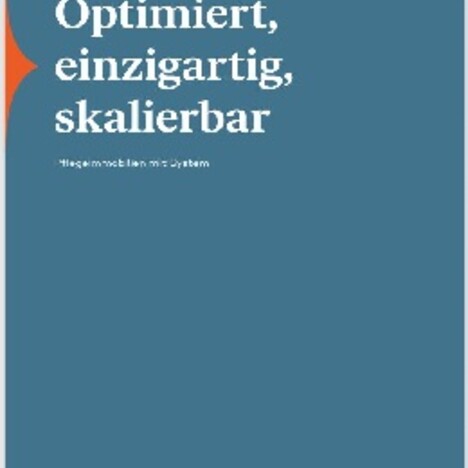29.03.2021
Cureus care home survey: Operator risk is the biggest risk factor
Hamburg, 29 March 2021. In a survey instigated by Cureus, 70% of surveyed real estate experts named operator risk as the biggest risk factor in care home investments. In second place, 56% named political risk. Far behind, the survey’s respondents raked high maintenance costs as the third greatest risk factor (22%). These are among the findings of a recent online survey of real estate experts on the topic of healthcare real estate.
“According to the survey results, classic nursing homes are still the most attractive cluster for investors within healthcare real estate”, reports Gerald Klinck, CFO of Cureus. “And the market is also unanimous with regard to demand. There are no signs of a decline in demand from society, operators or investors for nursing homes by 2040. These are findings that continue to encourage us to place a major focus on full inpatient facilities in particular, but also assisted living, with our system care homes”.
When asked about the decisive factors for the long-term success of care homes, the competence and the business model of the operator were also cited by 71% as decisive. The micro-location was rated as equally important, such as access to public transport and medical services. In joint third place, with 44%, the ability of a property to meet the needs of operators and residents were named as relevant success criteria. Less decisive, according to the survey, are the macro-location (36%) and preparation for possible future legal requirements (21%). Bringing up the rear is the alignment of the property with ESG criteria (17%).
Survey confirms strong demand for care homes
The survey also provides clear results with regard to demand for nursing homes and low construction volumes. At 82%, a clear majority of respondents stated that society’s demand for nursing homes will continue to increase over the next 20 years, 12% expect stagnation, and only 2% a decline. Above all, 60% of respondents see new construction or demolition of existing nursing homes and subsequent new construction as the best possible way to meet the growing demand on the supply side. Only 27% consider the renovation of existing properties to be suitable for this purpose, while 13% are in favour of converting hotel properties, for example, to meet demand.
Among the most important reasons for the low construction volume of nursing homes in Germany, 72% cited prohibitive land prices or construction costs. Also significant are the time it takes municipalities to issue building permits (44%), the legal framework conditions (42%) and a lack of building capacity (36%). Lack of demand from operators (8%) or investors (2%) is not considered relevant.
“Above all, expensive land prices and high construction costs are the biggest stumbling blocks to quickly meeting the rapidly growing demand for modern care places identified by those we surveyed”, notes Christian Möhrke, COO of Cureus. “While land prices are more or less fixed, Cureus’ experience shows, however, that construction costs with economies of scale through standardisation offer extensive scope for optimisation. Also, our system care home approach has a positive impact on reducing operator risk, which respondents rated as highly relevant, and on locally varying planning requirements”.
About the survey
Participants were invited to take part in the quantitative online survey via LinkedIn, Xing and industry newsletters between 15 February and 12 March 2021. The focus was on participants from the real estate industry. A total of 54 people answered the online questionnaire in full. According to their own information, the majority of respondents were specialists from the healthcare real estate sector (67%).


